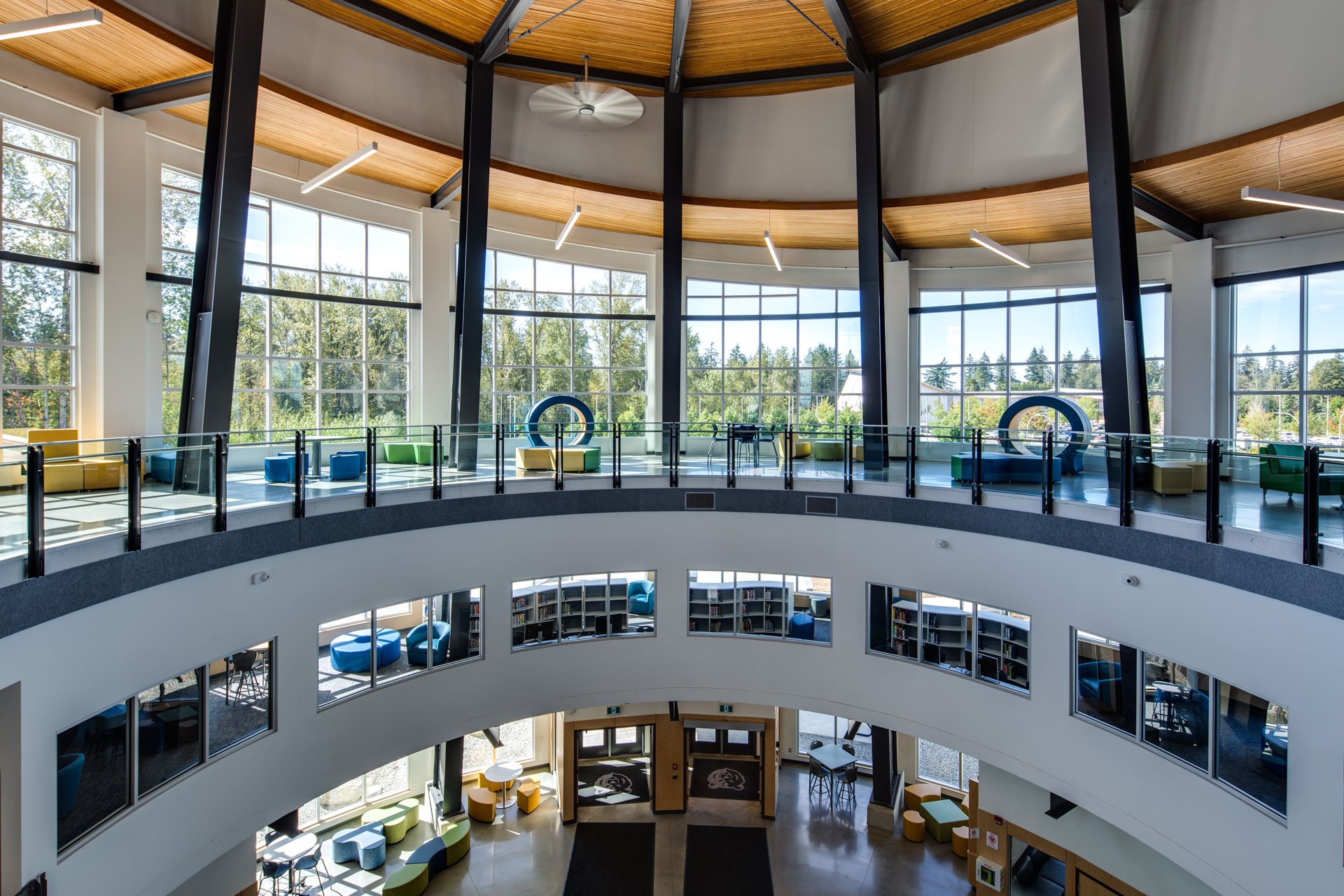This is part of a series on the benefits professional development for teachers with on flexible furniture in 21st Century classrooms. Read also:
New Furniture. Now What?
How are we helping teachers transform learning?
The success story of a school who put teachers first.
There’s one more step in the process of transforming your learning spaces that often goes unappreciated – the teachers. Here's a story about Grandview Heights Secondary School, a school that decided to change that.

In 2020 a beautifully designed school was under construction in Surrey, Vancouver, British Columbia, one of the fastest-growing communities in the area. The vision for the planning team was to design an environment that would enhance collaborative, innovative, and personalized learning opportunities for their students.
Building Teacher Buy-in for new learning spaces
Due to COVID restrictions, the school's opening was delayed by a year. This posed many different challenges for the administrative team at Grandview Heights Secondary School. These challenges included a year of teaching remotely, working in isolation to equip the school, hiring staff, as well as engaging students, staff, and the community.
One of the biggest concerns was preparing for the day when they would return to in-person instruction. Students were coming from 4 different high school campuses while the 55 teachers were coming from 15 different campuses. How would they unite students, staff, and the community?
Working tirelessly for a year, the administration was focused on creating a vision and purpose that was centered around connecting the dots between the physical space and the vision of student success.
Understanding that many of their teachers would come in from very different experiences, they knew the importance of bridging the gap between innovative school design and the “furniture + pedagogy = new student learning outcomes” mantra.
... identifying a paradox between these incredible new learning spaces and the challenge sometimes educators have bringing their experience ... into a new space, and trying to adapt to the new space and finding that is difficult. It's sort of the difference between the agency of the educators and their ability to take advantage of the potential of these incredible spaces, [however], sometimes we're hindered by our experience and [the] habits that we bring from traditionally built schools.
– Grandview Heights teacher
To ensure everyone understood the important connection between their vision of student learning and teaching in these new spaces, school administrators invested in professional learning that focused on how (and why) to use their new, collaborative furniture.
Professional Learning Builds a Community of Leaders
During a three-hour workshop conducted virtually because of COVID travel restrictions, I got to watch 80 teachers dig into the research that is fueling the change in the design of learning environments. As they shared with their peers, it was affirming to hear their “Ah-Ha's”.
... noticing the cycle that if you change the furniture, you change maybe the way you teach, and therefore you change how people learn.
– Grandview Heights teacher
Even more exciting in the end, was hearing the many ways this group of energetic educators would take off from what they learned to invent more, exciting ways to use their new spaces.
We're hoping to try and use the room in different ways. So, not just keep it the way we set it up initially, [but] really look at how we can use the furniture collaboratively. So, for example, taking the fish desks and having groups use them to report out to the class and really work together. And then we were thinking in terms of brainstorming with the whiteboard tables and the kids being able to gallery walk around and look at each other's learning and add to [it]....
– Grandview Heights teacher
The story is true. And we look forward to hearing more from Grandview as it continues to build its community. How many other schools face similar real-life challenges in transforming their learning spaces?
As they often are, teachers can be the missing link. They are the primary users of these new innovative spaces and need to have a clear vision of innovative and flexible learning environments. Doesn’t it make sense that we make the investment to help them take advantage of the new tools for teaching?